Neil & Leigh Heseltine, Hill Top Farm 2/3
What you do to encourage this biodiversity?
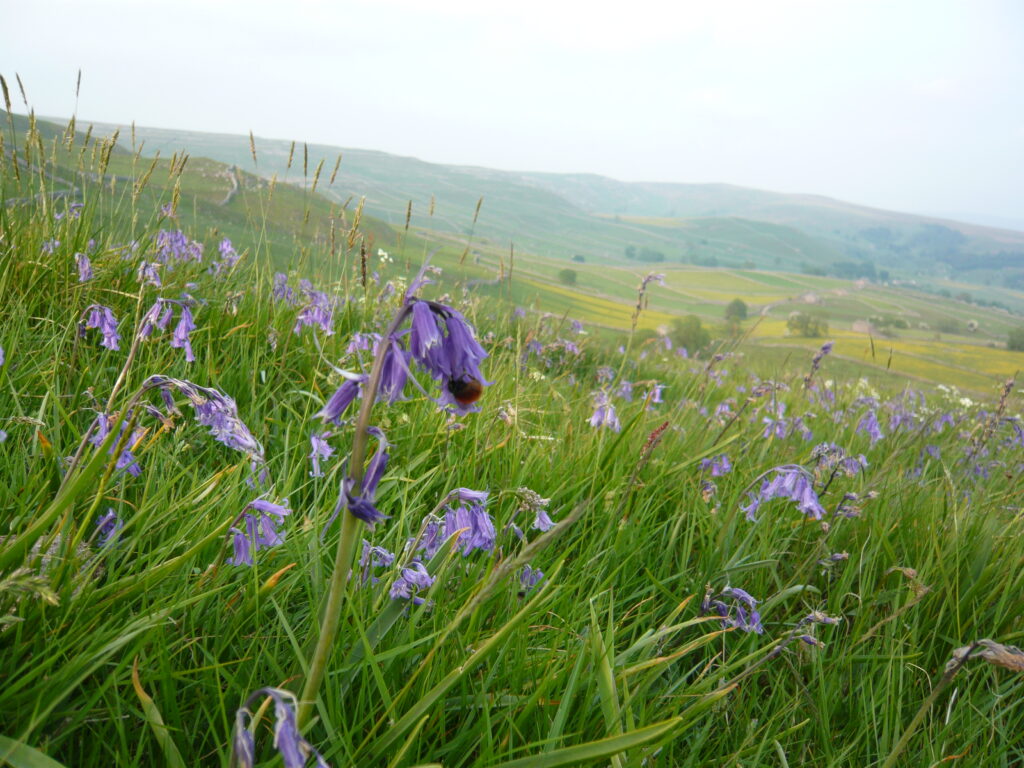
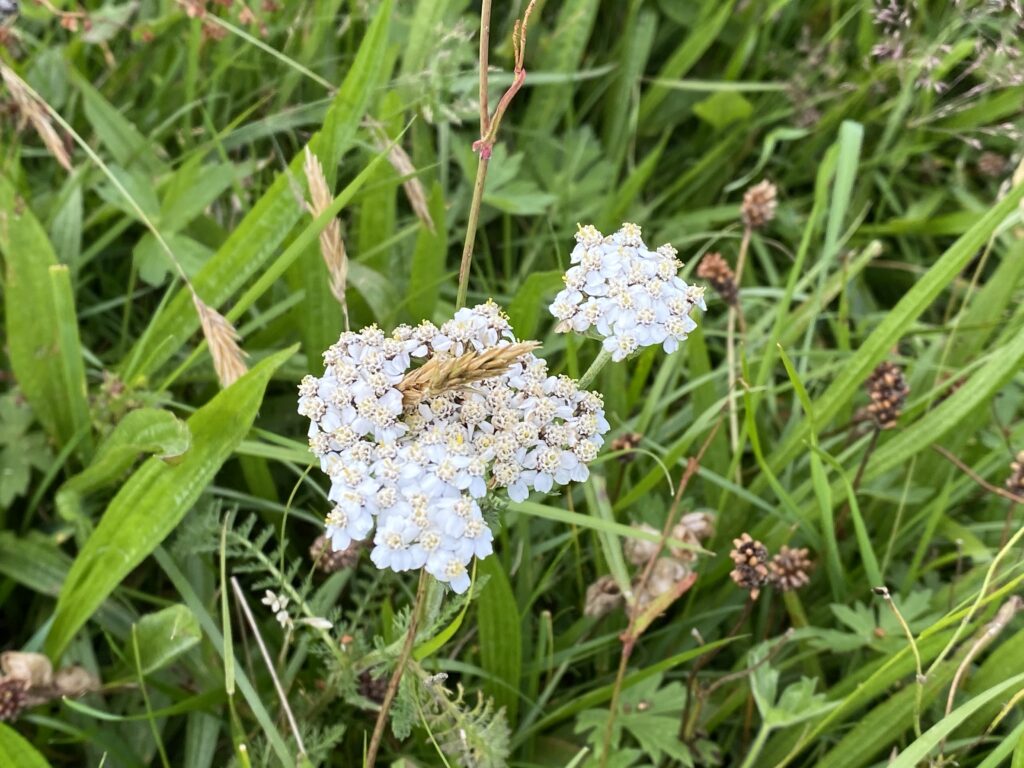
Back in 2004, as we mentioned before, we took part in the European project called The Limestone Country project. It focused on native breeds of cattle grazing on limestone pastures. We’d seen how subsidies were paid through the 1990s and early 2000s, resulting in a shift in how the limestones areas were grazed, essentially overgrazing and too many sheep.
So, the project was about reversing the impact of subsidies and grazing practices, by re-introducing native breed cattle and fewer sheep. We got involved and acquired 19 Belted Galloway heifers to change the density of grazing as well as the species doing the grazing. We changed the time when grazing started and ended. We let pastures grow from May to August with no grazing and then out-wintered the cattle, grazing them throughout winter only to allow flowers to set seed and ground-nesting birds and their fledglings the space to thrive. We saw at firsthand what can happen, managing the land to have a positive influence on biodiversity. And conversely, we still had 600 sheep on the farm, managing some areas in this new way and some differently with the sheep. As we started to see the impact of our grazing regimes on the farm, we realised if you’re managing land in a sympathetic way, with biodiversity upper most, you get results.
At the time, when we look back, we see how much of an influential time it was; it changed our whole philosophy. We had had a production mindset, but our new process for managing grazing changed our philosophy into one that farms with nature. Nature is at the forefront of our mind and we harness natural processes entirely if we can. If farm animals are treated as part of Nature, in a natural habitat, they can almost live without our intervention! They can live, thrive and breed; we just need to create the right conditions and habitat for them. We aim to live in harmony, treating them in the same way and with the same theories as we do Nature.
Economically, we firmly believe farming with natural processes is the best thing we could have done for the profitability of the farm, and the farm is now more resilient and profitable, whether in the face of tough trading conditions or changing weather patterns. We can now withstand whatever life throws at us and can ride those waves better than ever before in every way - we’ve always got feed for animals! To add to that, we’re working fewer hours on the farm because the animals are less reliant on us, it’s about grazing not feeding, not about mucking out. We just create the right habitat and they do the living themselves.
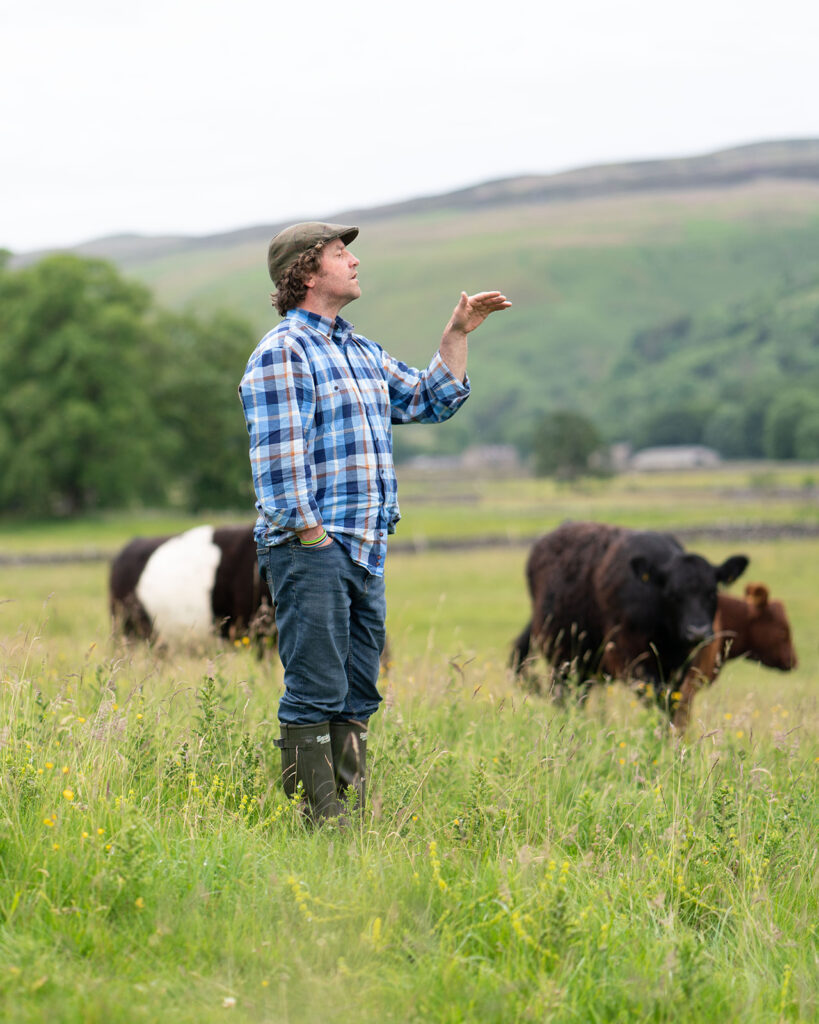
Neil out on pasture (Gail Caddy)
How it is connected across the farm and beyond
Good question, it doesn’t!
Other local farms are managed under Countryside Stewardship but I don’t think there are many farms that are managed in the same way, with the same ethos and all contained within the land they are farming. We connect with one or two other people in the locality, there’s a rewilding project in Skipton, but it’s in its infancy, so we’ll wait and see.
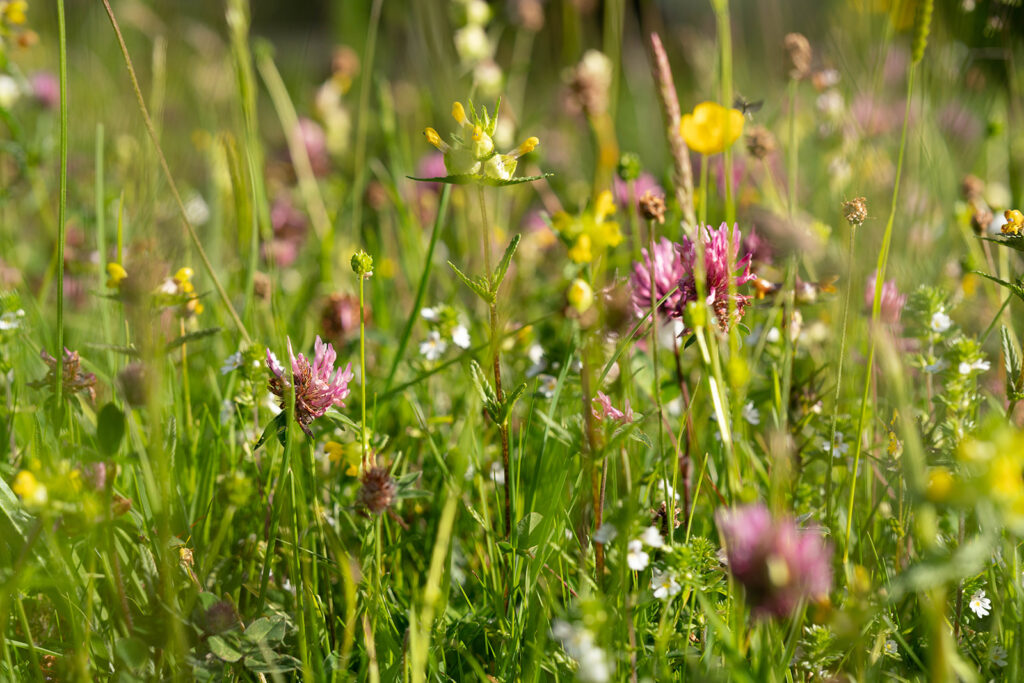
Upland hay meadow at Hill Top Farm (Gail Caddy)
What are the benefits to the farm and is it increasing its climate and business resilience? If so, in what way?
We think it’s a multiple win. We aren’t comparing ourselves to others, but where we were in 2012 and before, was all changed by the Limestone Country Project. It really was a game changer, both for us as people and for how we farmed.
And as a result in 2012, we got involved with Pasture For Life via John Meadley, we went to the first Oxford Real Farming Conference in 2013 and both were defining. They both gave us the confidence in our thinking because we could see there were others out there thinking and doing as we were. It gave us the confidence to change and shift how we farmed in totality and how we farmed our sheep. We reduced our flock numbers, and less became more. Biodiversity and profitability took our farm down a very different direction with a different mindset, and we think we’re winning!
We’ve put ourselves in a better position in almost every way you can measure; impact on climate, on-farm biodiversity, the amount of work we now do or don’t do, ROI on each hour we work, quality of life outside the farm, and the resilience of the business and the animals. We believe we’ve put ourselves and the farm in a better place! We will still be farming here in 5 or 10 years’ time because we can withstand whatever comes. One of our landlords is The National Trust. We’ve explained what we’re doing as we’ve gone along, and although we had the odd look of concern and questions about thistles and the visuals of the land, we’re very much supported. Our main method of weed control is scything, with someone in to do that for 3 weeks every year.
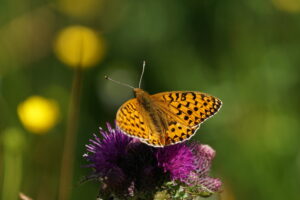
Fritillary butterfly on thistle (Tom Aspinall)



